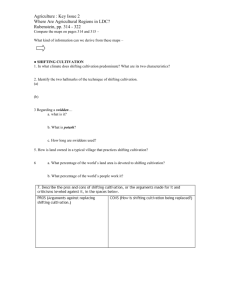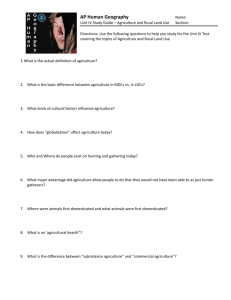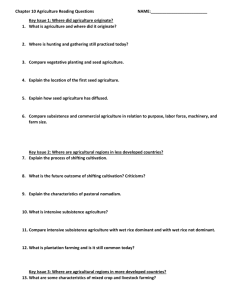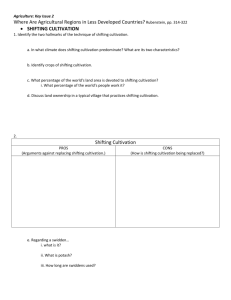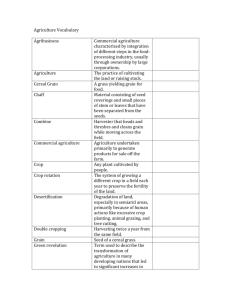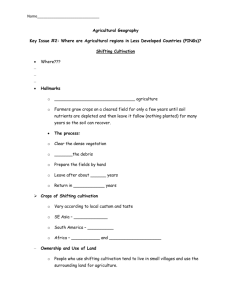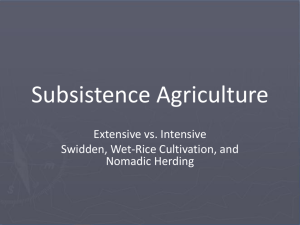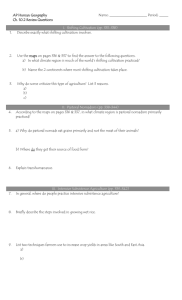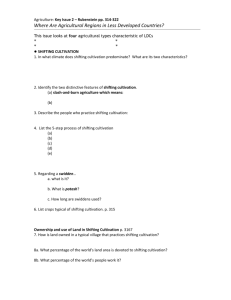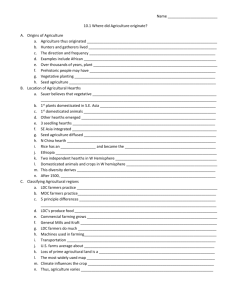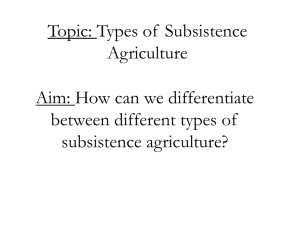AP HUMAN GEOGRAPHY CHAPTER 10, SECTIONS
advertisement
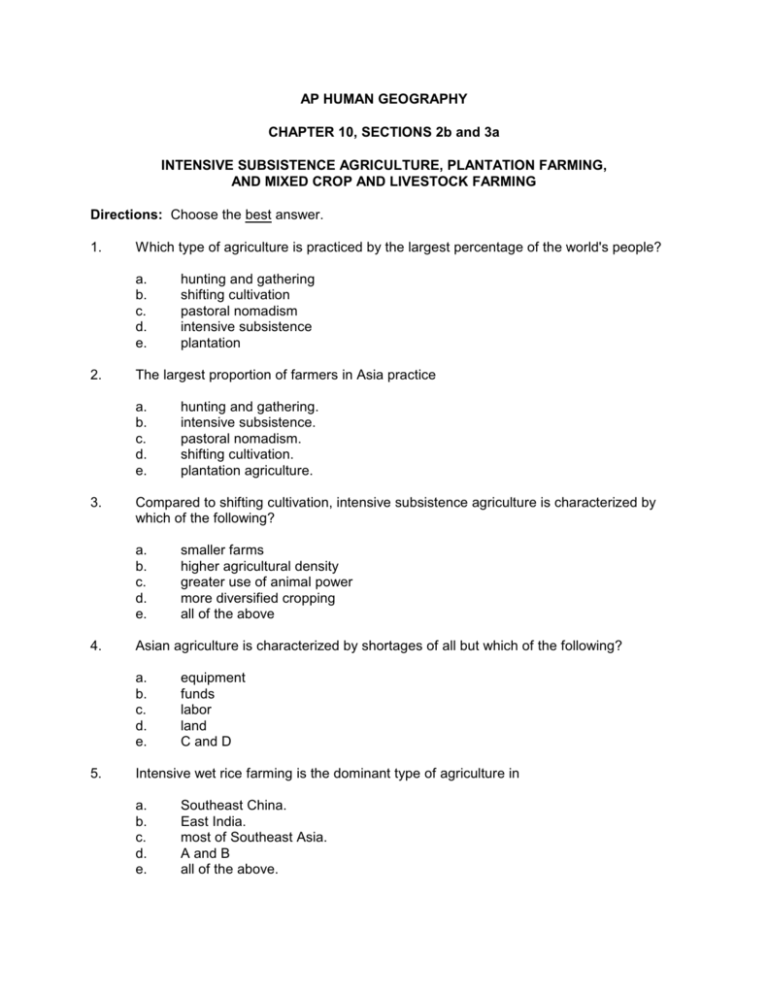
AP HUMAN GEOGRAPHY CHAPTER 10, SECTIONS 2b and 3a INTENSIVE SUBSISTENCE AGRICULTURE, PLANTATION FARMING, AND MIXED CROP AND LIVESTOCK FARMING Directions: Choose the best answer. 1. Which type of agriculture is practiced by the largest percentage of the world's people? a. b. c. d. e. 2. The largest proportion of farmers in Asia practice a. b. c. d. e. 3. smaller farms higher agricultural density greater use of animal power more diversified cropping all of the above Asian agriculture is characterized by shortages of all but which of the following? a. b. c. d. e. 5. hunting and gathering. intensive subsistence. pastoral nomadism. shifting cultivation. plantation agriculture. Compared to shifting cultivation, intensive subsistence agriculture is characterized by which of the following? a. b. c. d. e. 4. hunting and gathering shifting cultivation pastoral nomadism intensive subsistence plantation equipment funds labor land C and D Intensive wet rice farming is the dominant type of agriculture in a. b. c. d. e. Southeast China. East India. most of Southeast Asia. A and B all of the above. 6. Which of the following is a typical practice in growing rice in Asia? a. b. c. d. e. 7. To increase crop yields, farmers in South China commonly practice a. b. c. d. e. 8. d. e. distribute the workload of the crops and livestock evenly throughout the year. generate 3/4ths of their income from the sale of livestock. create a system where crops provide food for livestock and the livestock provide manure for crop fertilization. all of the above. none of the above. After corn, the most important crop in the U.S. mixed crop and livestock region is a. b. c. d. e. 11. cultural preference. tradition. climate. soil. harvesting wet rice requires expensive machinery. Mixing crops and livestock allows farmers to a. b. c. 10. double cropping. transhumance. threshing. pastoral nomadism. shifting cultivation. The most important reason why most farmers in northeast China grow crops other than wet rice is a. b. c. d. e. 9. preparing fields with a plow drawn by oxen flooding the plowed field with water growing seedlings in a nursery transplanting seedlings into the flooded field all of the above wheat. soybeans. barley. fruits and vegetables. sugar beets. What is the purpose of crop rotation? a. b. c. d. e. maintaining fresh products for market maintaining price supports maintaining the fertility of fields responding to shifting consumer preference reducing transportation costs
